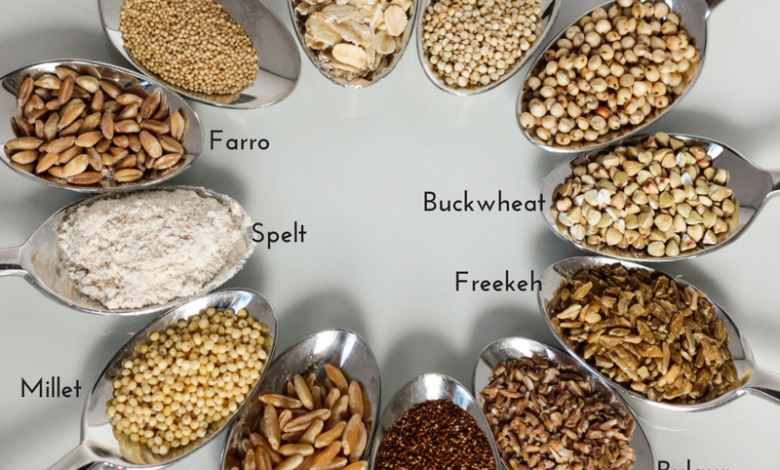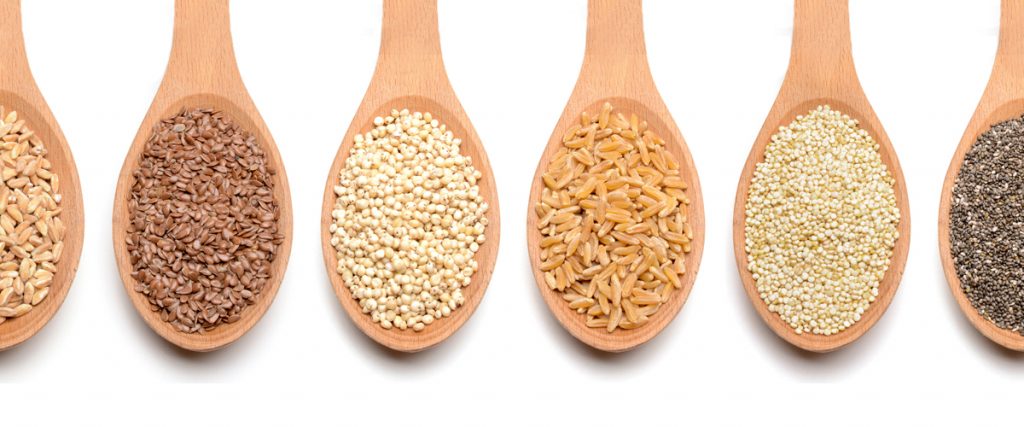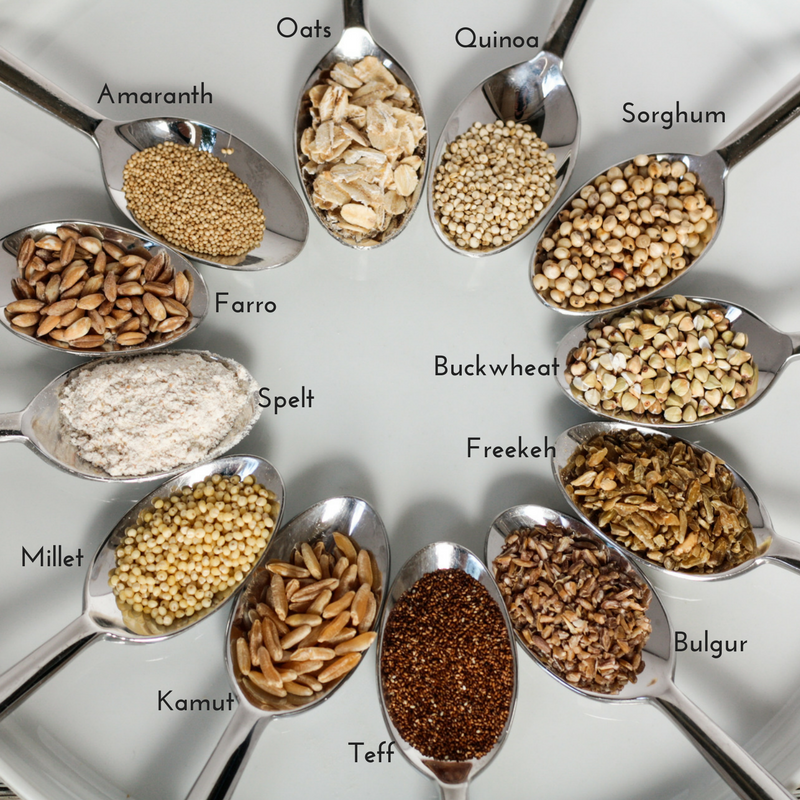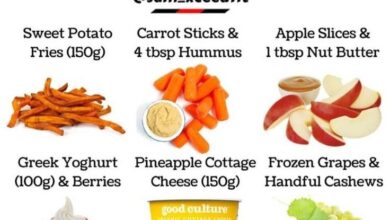
Everything You Need to Know About Ancient Grains
Everything need know ancient grains – Everything you need to know about ancient grains – these incredible seeds have been around for centuries, quietly nourishing civilizations and now, they’re making a comeback in modern diets. From their fascinating history and nutritional power to their versatility in the kitchen, ancient grains are more than just a culinary trend, they’re a window into a healthier, more sustainable future.
These grains, often called “ancient” because they haven’t undergone the same extensive genetic modifications as their modern counterparts, offer a unique blend of flavor and nutrition. From the nutty, chewy texture of quinoa to the earthy depth of spelt, each grain brings its own distinct character to the table.
What are Ancient Grains?
Ancient grains are a group of cereal grains that have been cultivated for a long time, often predating the development of modern, high-yielding varieties. These grains have been a staple food source for many cultures throughout history, and they are experiencing a resurgence in popularity today due to their nutritional value, unique flavors, and potential health benefits.
Common Ancient Grains
Ancient grains are a diverse group, and there are many different types available. Some of the most common ancient grains include:
- Amaranth( Amaranthus hypochondriacus): This grain is a good source of protein, fiber, and iron. It has a slightly nutty flavor and can be used in a variety of dishes, including porridge, salads, and baked goods.
- Barley( Hordeum vulgare): Barley is a versatile grain that can be used to make bread, beer, and soups. It is a good source of fiber and B vitamins.
- Buckwheat( Fagopyrum esculentum): Despite its name, buckwheat is not related to wheat. It is a good source of protein, fiber, and manganese. It has a slightly earthy flavor and can be used in pancakes, noodles, and salads.
- Einkorn wheat( Triticum monococcum): Einkorn is one of the oldest cultivated wheat varieties. It is a good source of protein and fiber. It has a nutty flavor and can be used in bread, pasta, and couscous.
- Farro( Triticum dicoccum): Farro is a type of wheat that has a chewy texture and a nutty flavor. It is a good source of fiber, protein, and iron.
- Kamut( Triticum turgidum): Kamut is a type of wheat that is high in protein, fiber, and selenium. It has a sweet, nutty flavor and can be used in bread, pasta, and couscous.
- Millet( Panicum miliaceum): Millet is a small, round grain that is a good source of protein, fiber, and iron. It has a mild, slightly sweet flavor and can be used in porridge, salads, and pilafs.
- Oats( Avena sativa): Oats are a good source of fiber, protein, and magnesium. They have a slightly nutty flavor and can be used in porridge, granola, and baked goods.
- Quinoa( Chenopodium quinoa): Quinoa is a complete protein source, meaning it contains all nine essential amino acids. It is also a good source of fiber and iron. Quinoa has a slightly earthy flavor and can be used in salads, soups, and as a substitute for rice.
Ancient grains are a fantastic way to add more fiber and nutrients to your diet, but let’s be honest, sometimes you just want to know if simple things like standing can help you reach your weight loss goals. If you’re curious about the calorie burn of standing, check out this article on does standing burn enough calories to aid weight loss ! But don’t forget, incorporating ancient grains into your meals can be a delicious and sustainable way to support your overall health journey.
- Rye( Secale cereale): Rye is a grain that is often used in bread and other baked goods. It is a good source of fiber and manganese.
- Spelt( Triticum spelta): Spelt is an ancient wheat variety that has a nutty flavor and a chewy texture. It is a good source of protein, fiber, and iron.
History of Ancient Grains
Ancient grains have been cultivated for thousands of years, dating back to the Neolithic period. They were a staple food source for many ancient civilizations, including the Egyptians, Greeks, and Romans.
Ancient grains are a fantastic way to add variety and nutrition to your diet. They’re packed with fiber, protein, and essential vitamins and minerals. One of the best ways to incorporate them into your meals is through salads! Check out these diets and recipes for meal worthy salads that feature ancient grains like quinoa, farro, and freekeh.
You’ll be surprised at how delicious and satisfying these salads can be, and you’ll be getting a healthy dose of ancient grains at the same time!
- Early Cultivation:Some ancient grains, like einkorn wheat and barley, were among the first crops to be domesticated. These grains were likely first cultivated in the Fertile Crescent region of the Middle East around 10,000 years ago.
- Spread and Adaptation:Over time, ancient grains spread to other parts of the world, adapting to different climates and environments. For example, quinoa originated in the Andes Mountains of South America, while millet is believed to have originated in Asia.
- Modern Revival:In recent years, there has been a renewed interest in ancient grains. This is due in part to their nutritional value, unique flavors, and potential health benefits. As consumers become more aware of the benefits of whole grains, ancient grains are becoming increasingly popular.
Nutritional Benefits of Ancient Grains

Ancient grains offer a wealth of nutritional benefits that make them a valuable addition to a balanced diet. These grains, often referred to as “ancient” because they have been cultivated for centuries, are packed with essential nutrients that can contribute to overall well-being.
Nutritional Profile of Ancient Grains
Ancient grains are known for their impressive nutritional profile, boasting a higher content of protein, fiber, and essential vitamins compared to modern grains like wheat.
- Protein:Ancient grains, such as quinoa and amaranth, are excellent sources of complete protein, containing all nine essential amino acids. This makes them a valuable protein source for vegetarians and vegans.
- Fiber:Ancient grains are rich in both soluble and insoluble fiber. Soluble fiber helps regulate blood sugar levels and cholesterol, while insoluble fiber promotes digestive health and regularity.
- Vitamins and Minerals:Ancient grains are a good source of several essential vitamins and minerals, including iron, magnesium, and zinc. These nutrients play crucial roles in maintaining overall health and well-being.
Comparison to Modern Grains
When compared to modern grains like wheat, ancient grains often stand out for their nutritional superiority.
| Nutrient | Ancient Grains | Modern Grains (Wheat) |
|---|---|---|
| Protein | Higher | Lower |
| Fiber | Higher | Lower |
| Glycemic Index | Lower | Higher |
Health Benefits of Ancient Grains, Everything need know ancient grains
The nutritional richness of ancient grains translates into a range of health benefits.
- Blood Sugar Control:Ancient grains, due to their lower glycemic index, are digested more slowly, resulting in a gradual release of glucose into the bloodstream. This helps maintain stable blood sugar levels and may reduce the risk of developing type 2 diabetes.
- Cholesterol Management:The soluble fiber in ancient grains can help lower LDL (“bad”) cholesterol levels, which is a significant risk factor for heart disease.
- Improved Digestive Health:The high fiber content of ancient grains promotes regular bowel movements and helps maintain a healthy gut microbiome. This can reduce the risk of digestive issues like constipation and irritable bowel syndrome.
Culinary Uses of Ancient Grains

Ancient grains, with their unique flavors and textures, offer a world of culinary possibilities. Beyond their nutritional benefits, these grains add depth and complexity to dishes, making them a versatile ingredient for both everyday meals and special occasions.
Cooking Methods and Flavor Profiles
Each ancient grain possesses distinct cooking characteristics and flavor profiles, influencing their suitability for different culinary applications.
Ancient grains like quinoa, farro, and spelt are packed with nutrients and fiber, making them a great addition to a healthy diet. But what about pasta? Can it be healthy too? You might be surprised to learn that pasta can be part of a balanced diet, especially when you choose whole-grain varieties.
Learn more about the health benefits of pasta and how to incorporate it into your ancient grain-focused meals.
| Grain | Cooking Method | Flavor Profile | Ideal Pairings |
|---|---|---|---|
| Amaranth | Boiled, toasted, or used as a thickener | Nutty, slightly sweet, with a hint of earthiness | Salads, soups, stews, desserts, and savory dishes |
| Barley | Boiled, roasted, or used in brewing | Slightly sweet, with a nutty and earthy flavor | Soups, stews, salads, risottos, and beer |
| Buckwheat | Boiled or roasted | Slightly nutty, with a slightly bitter and earthy flavor | Salads, soba noodles, pancakes, and savory dishes |
| Farro | Boiled or roasted | Nutty, slightly sweet, with a chewy texture | Salads, soups, stews, pasta dishes, and grain bowls |
| Freekeh | Boiled or roasted | Smoky, nutty, with a slightly chewy texture | Salads, soups, stews, pilafs, and grain bowls |
| Kamut | Boiled or roasted | Nutty, slightly sweet, with a chewy texture | Salads, soups, stews, pasta dishes, and grain bowls |
| Quinoa | Boiled or roasted | Slightly nutty, with a delicate flavor | Salads, soups, stews, grain bowls, and desserts |
| Spelt | Boiled or roasted | Nutty, slightly sweet, with a chewy texture | Salads, soups, stews, breads, and pasta dishes |
Popular Recipes Featuring Ancient Grains
Ancient grains lend themselves to a wide range of culinary creations, adding unique flavors and textures to both sweet and savory dishes.
- Breakfast:Quinoa porridge with berries and nuts, spelt pancakes with maple syrup, overnight oats with kamut and chia seeds.
- Lunch:Farro salad with roasted vegetables and feta cheese, barley soup with lentils and vegetables, buckwheat noodles with stir-fried vegetables and tofu.
- Dinner:Freekeh pilaf with chicken and vegetables, amaranth stuffed peppers with black beans and corn, spelt pasta with tomato sauce and meatballs.
- Desserts:Amaranth cookies, quinoa chocolate chip cookies, spelt bread pudding.
Incorporating Ancient Grains into Everyday Meals
Ancient grains can easily be incorporated into your daily diet, adding nutritional value and flavor to your meals.
- Breakfast:Substitute quinoa or spelt for oatmeal in your morning routine.
- Lunch:Add cooked barley or farro to salads or grain bowls for a hearty and satisfying meal.
- Dinner:Use freekeh or kamut as a base for pilafs or as a side dish for grilled meats or vegetables.
Ancient Grains in Modern Diets: Everything Need Know Ancient Grains
The ancient grains that were once relegated to niche markets and specialty stores have experienced a remarkable surge in popularity in recent years. This trend reflects a growing awareness of the health benefits of these grains and a shift in consumer preferences towards whole-grain options.
Factors Driving the Popularity of Ancient Grains
The rising popularity of ancient grains can be attributed to a confluence of factors:
- Health Benefits:Ancient grains are often packed with nutrients, including fiber, protein, and essential vitamins and minerals. They are also a good source of antioxidants and may offer various health benefits, such as improved digestion, lower cholesterol levels, and reduced risk of chronic diseases.
For instance, quinoa is a complete protein, meaning it contains all nine essential amino acids, making it a valuable addition to vegetarian and vegan diets.
- Gluten-Free Options:Many ancient grains, such as quinoa, amaranth, and teff, are naturally gluten-free, making them suitable for individuals with celiac disease or gluten sensitivity. This factor has significantly contributed to their growing appeal.
- Taste and Texture:Ancient grains offer a diverse range of flavors and textures, adding variety and interest to meals. Some, like farro, have a nutty flavor and chewy texture, while others, like millet, have a delicate, slightly sweet taste.
- Sustainability:Some ancient grains are more sustainable than conventional grains, requiring less water and fertilizer to grow. This aligns with the increasing focus on sustainable and ethical food choices.
- Trendy and Novel:Ancient grains have become associated with a healthy and trendy lifestyle, appealing to consumers seeking new and exciting food experiences.
Availability and Accessibility of Ancient Grains
Ancient grains are becoming increasingly accessible to consumers worldwide.
- Grocery Stores:Many mainstream grocery stores now carry a selection of ancient grains, including quinoa, farro, and brown rice. The availability varies depending on the location and size of the store.
- Online Retailers:Online retailers offer a wider variety of ancient grains, including specialty blends and pre-cooked options. This provides greater convenience and access to a wider range of choices.
- Specialty Stores:Health food stores and specialty grocery stores typically carry a larger selection of ancient grains, including less common varieties like amaranth and teff.
Closure

As you explore the world of ancient grains, remember that they’re not just a culinary trend, but a gateway to a healthier, more sustainable way of eating. So, ditch the processed, refined grains and embrace the ancient wisdom of these nutritional powerhouses.
Your taste buds and your body will thank you for it!






